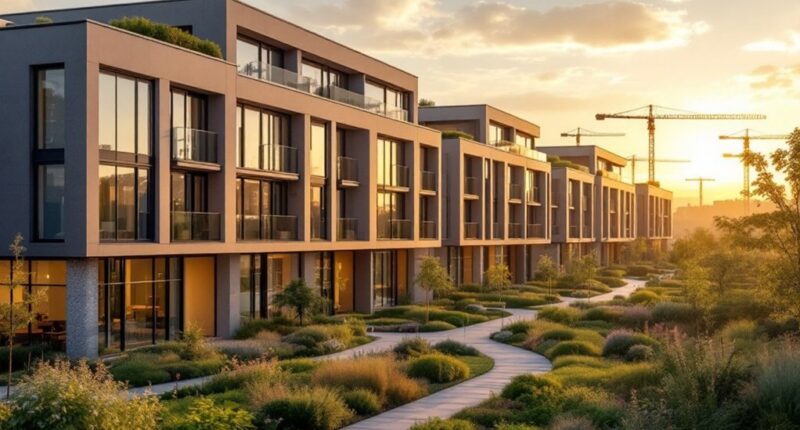The confluence of three critical market dynamics—demographic tailwinds, supply constraints, and capital market challenges—has created an unprecedented investment landscape in the senior housing sector, where demand fundamentals markedly outpace current development pipelines.
You’re witnessing an acute supply-demand imbalance as the 80+ population is projected to surge by 47% over the next decade, necessitating approximately 42,000 new senior housing units annually, while construction starts have simultaneously plummeted to historical lows amid heightened development costs and regulatory impediments.
This constrained development environment has intensified competition for existing high-quality assets, particularly those situated in primary metropolitan areas, as investors strategically position themselves ahead of the demographic wave expected to peak in the latter half of the 2020s.
Your investment opportunities will be further amplified by the impending maturation of over $10 billion in senior housing loans, creating acquisition prospects for well-capitalized market participants when the lending landscape improves, anticipated by 2025.
Operational efficiency has become paramount as you navigate persistent labor shortages and elevated operational expenses that continue to challenge profitability margins throughout the industry.
The integration of technological innovations, including AI-powered management tools, wearable monitoring devices, and predictive analytics platforms, offers substantial opportunities to mitigate these staffing challenges while simultaneously enhancing resident safety protocols and service quality metrics.
Technology platforms transcend mere staffing solutions, delivering enhanced safety protocols and service excellence in modern senior living environments.
The rising popularity of eco-friendly communities is reshaping development priorities, with sustainable design becoming a key differentiator in the market.
You’ll need to incorporate increasingly sophisticated market-specific strategies as secondary markets demonstrate growing viability for high-performing assets, requiring granular localized data analysis to identify superior investment targets.
The concerning reality that approximately 45% of existing inventory was built over 25 years ago highlights the urgent need for modernization to meet evolving consumer expectations.
The convergence of these market forces—demographic momentum, constrained supply pipelines, and evolving capital dynamics—presents a compelling thesis for strategic positioning in the senior housing sector, provided you maintain rigorous analytical discipline in asset selection and operational management while adapting to evolving consumer preferences that increasingly demand technology-enabled, personalized living environments.
Investors are showing particular interest in vintage communities or renovated properties that offer value-add opportunities with lower acquisition costs compared to new construction.









